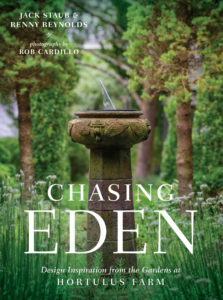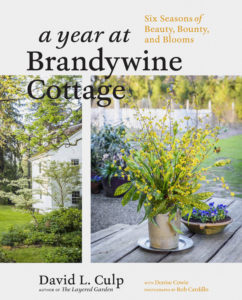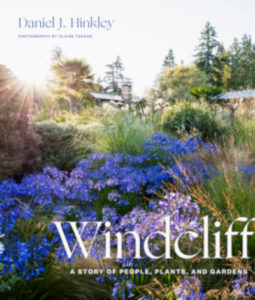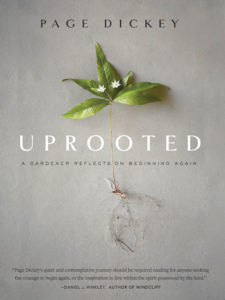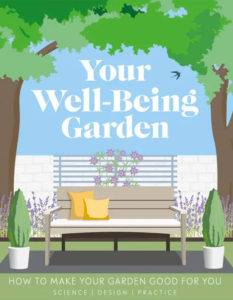The Best New Gardening Books of 2020
November 17th, 2020
Books make ideal holiday gifts for gardeners since a.) there’s always something new to learn, and b.) there’s never a shortage of new titles.
2020 brought us four particularly good reads involving remarkable gardens and the gardeners who created them – and in two cases, special gardens left behind.
Whether there’s a gardener on your gift list or you’re looking to advance your own dirty knowledge, here’s the lowdown on those four titles and four other new-for-2020 garden books that I’d recommend:
“Chasing Eden: Design Inspiration from the Gardens at Hortulus Farm”
By Jack Staub and Renny Reynolds (Timber Press, $25 hardcover)
Hortulus Farm is a gem of a landscape featuring 24 trail-connected gardens on a 100-acre, 18th-century one-time dairy farmstead in Bucks County.
It was “on the edge of dereliction” when playwright and advertising executive Jack Staub and event-planner extraordinaire Renny Reynolds bought it in 1979 as a get-away from New York City stresses.
Their book tells how they saw beauty lurking in the “rural detritus” and set about meticulously turning the land into their own private Eden.
Each chapter of “Chasing Eden” revolves around a different design feature with the authors telling how they dealt with each and then offering thoughts and lists of do’s and don’ts to help readers work toward their own version of Eden.
Superb photos by Rob Cardillo show the results at Hortulus.
Sadly, Staub died just two weeks after the book came out in January.
“A Year at Brandywine Cottage”
By David L. Culp (Timber Press, $35 hardcover)
Just west of Hortulus in Chester County, garden speaker and plantsman David Culp has spent the last 30 years creating a peaceful, two-acre get-away next to a Colonial-era cottage in the Brandywine Valley near Downingtown.
Culp’s book, co-written with one-time Philadelphia Inquirer garden writer Denise Cowie and, like “Chasing Eden,” artfully photographed by Cardillo, is a print tour through the gardens as they change with the seasons.
At Brandywine Cottage, Culp divides his gardening year into six seasons, not the traditional four. And he aims to get the most out of each.
“A Year at Brandywine Cottage” uses the seasonal stories as a spring board for tips and insights into how we can all take our gardens to the next level, such as with cool plants worth trying, using your gardens as a resource for cut-flower bouquets, and ideas on mixing edibles in with the flowers.
If you liked Culp’s popular 2012 book “The Layered Garden,” you’ll like this one, too.
“Windcliff: A Story of People, Plants, and Gardens”
By Daniel J. Hinkley (Timber Press, $35 hardcover)
Here’s yet another story of an amazing garden and the gardener who created it – this one from one of America’s best-known plant hunters and the founder of Heronswood Nursery in Washington state.
Hinkley sold Heronswood and its display gardens (now a botanic garden) and moved to a six-and-a-half-acre site called Windcliff with a stunning view of Washington’s Puget Sound and the Olympic Mountain range.
It’s the story of how a gardener can leave a masterpiece plant collector’s garden and start all over… this time building on the lessons from the first and the experiences of 66 years of life in general.
Those learnings include the virtue of patience, the advantages of planting small, why it makes sense to plant-shop in different seasons, and the one big plus of moving away from a garden – leaving your mistakes behind.
“I wanted an inviting, intimate garden, much like the overstuffed chair next to our fireplace,” Hinkley writes.
As you’ll see from Claire Takacs’ beautiful photography, Windcliff has become one very, very comfortable chair.
“Uprooted: A Gardener Reflects on Beginning Again”
By Page Dickey (Timber Press, $27.95 hardcover)
Author Page Dickey also knows a little about leaving a spectacular garden.
She spent 34 years crafting elaborate and colorful gardens at Duck Hill in New York’s Westchester County, gardens that were featured in numerous magazines.
In an effort to scale back, Dickey and her husband moved to a 17-acre rural lot in northwestern Connecticut, surrounding a former Methodist church.
That much land doesn’t sound like scaling back, but half of it is wooded, and Dickey’s chapter-two approach at Church House is to garden more naturalistically.
“Working to rid the woods and fields of invasives and nurture the natives here is my new passion,” she writes.
“Uprooted” delves into the bittersweetness of leaving a property lovingly raised from childhood but soon arrives at the reality that raising a new “child” can be redeeming and invigorating.
“Nature’s Best Hope: A New Approach to Conservation that Starts in Your Yard”
By Douglas W. Tallamy (Timber Press, $29.95 hardcover)
Dr. Tallamy’s 2007 “Bringing Nature Home” laid out the reasons why we should plant more native plants in our landscapes, i.e. to fuel the insects and wildlife that depend on them for a diverse and healthy ecosystem.
His new book is a call to arms that tells how homeowners – one by one – can bring back the nature that bulldozers and big lawns took away.
We can do that, he says, by rethinking our yards as habitats or “conservation corridors” and turning them into what he dubs our own “homegrown national parks” that are alive with native birds, bees, and butterflies.
If you’ve heard one of Tallamy’s talks or read much of what he’s written, parts of “Nature’s Best Hope” already will be familiar. But if you’re new to the enviro-gardening movement, it’s the complete package that begins with the why and ends with the how.
By Nicole Burke (Cool Springs Press, $30 hardcover)
Lots of newbies got into food gardening this year, but not many were interested in digging up a traditional huge rectangle of the back yard and filling it with row after row of crops.
Way more popular is the “kitchen garden,” the style that Nicole Burke writes about in this new 208-page book that’s more than just a how-to.
Burke shares her self-taught experiences while offering all sorts of practical tips on creating a compact, raised-bed food garden that’s as stylish and attractive as it is productive.
She’s founder of a Houston, Texas, company that specializes in kitchen gardens (Rooted Garden), and founder of Gardenary, an online kitchen-garden resource.
By Eva Monheim (Cool Springs Press, $30 paperback)
Here’s a book for the avid gardener that focuses on that under-appreciated workhorse of the landscape, the shrub.
So many new and improved shrubs have come along in the last two decades that we have way better choices these days to spruce up our yew-and-azalea-dominated yards.
Eva’s book covers both flowering shrubs and evergreen ones and includes specifics on top varieties as well as how and where to use them, how to prune them, how to propagate them, and how to identify different types in the first place.
The author is a certified arborist and former or current woody-plants teacher at such regional institutes as Temple University, Philadelphia’s Barnes Arboretum and Chester County’s Longwood Garden… in other words, we’re getting some very solid, reliable information.
“Your Well-Being Garden: How to Make Your Garden Good for You”
By Alistair Griffiths and others (DK, $22.99 paperback)
As British gardening TV host Monty Don says in the introduction, “When you are sad, a garden comforts. When you are humiliated or defeated, a garden consoles. When you are consumed by anxiety, it will soothe you, and when the world is a dark and bleak place, it shines a light to guide you on.”
This book on how gardening nourishes our minds and bodies came along at a good time as numerous gardeners have been praising their yards as uplifting life rafts during a tumultuous, lockdown, pandemic year.
Written by a host of horticulturists and designers from Britain’s Royal Horticultural Society and Chelsea Flower Show, “Your Well-Being Garden” goes into evidence of why green spaces and gardening are good for both us and the environment, then offers four main sections with specific plants-and-health ideas.
The section on “The Protective Garden,” for example, includes a chapter on how plants can shield us from air pollution and screen out unwanted noise or views.
“The Healing Garden” talks about how gardening can overcome isolation, how it can reduce stress and pain, and why gardening can be better exercise than going to the gym.
“The Nourishing Garden” features chapters on edible gardening and medicinal plants, and “The Sustainable Garden” focuses on the enviro-friendly aspects of gardening, including giving shade, mitigating the effects of drought and floods, and creating a better habitat for pollinators.








